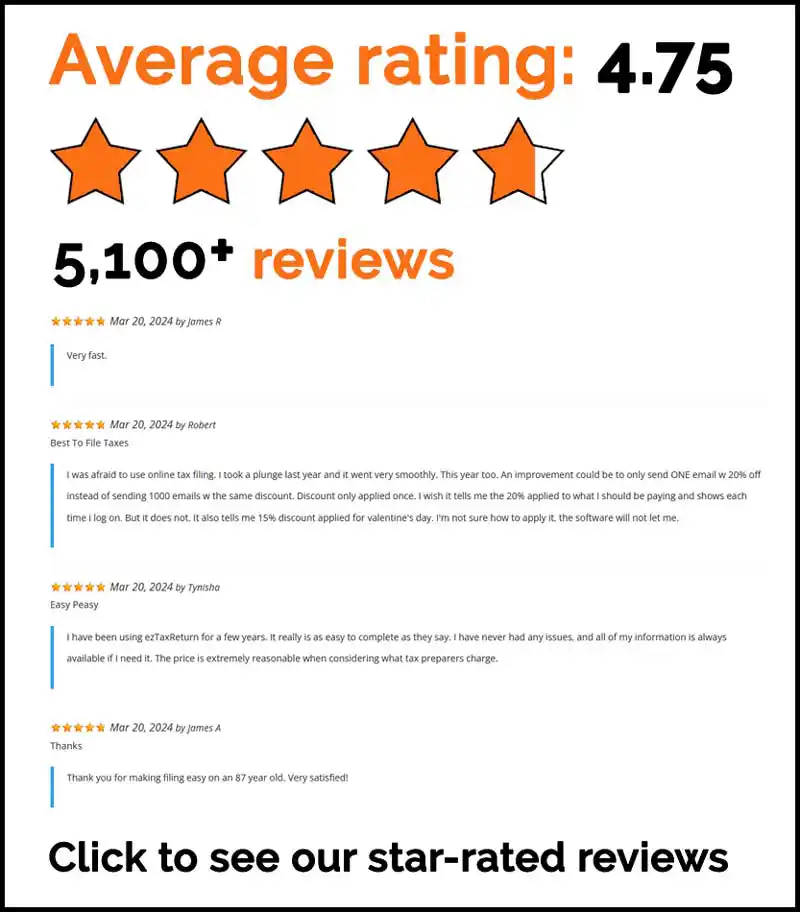The information in this article is up to date for tax year 2025 (returns filed in 2026).
Are you paying off student loans? The student loan interest deduction could help lower your taxable income by up to $2,500! In this guide, we’ll walk you through the basics, eligibility requirements, and how to claim this valuable tax break.
Key Takeaways
- The Student Loan Interest Deduction lets you reduce your taxable income by up to $2,500 of interest paid on qualified education loans, making it a valuable tax benefit for students and parents.
- Eligibility for the deduction depends on factors like filing status and modified adjusted gross income (MAGI), with specific income limits for claiming the full deduction.
- To maximize savings, keep track of necessary forms like Form 1098-E, and consider other education tax benefits such as the American Opportunity Tax Credit and Lifetime Learning Credit for additional financial relief.
What is the Student Loan Interest Deduction?
The student loan interest deduction is a tax benefit. Its purpose is to make higher education more affordable. This deduction offers a financial break for college students and parents repaying school debt by reducing taxable income. It’s one of several tax breaks available to help manage the costs associated with education, highlighting its importance in your financial planning toolkit.
Yes, student loan interest is indeed deductible on your taxes. The student loan interest deductible is capped at either $2,500 or the actual interest paid, whichever is lower. For instance, if you paid $3,000 in interest, your deduction is capped at $2,500. Conversely, if you paid $1,800 in interest, you can deduct the full amount. This deduction can be claimed even if you do not itemize your deductions, making it an accessible option for many taxpayers.
Moreover, the student loan interest deduction reduces your taxable income, which may lower your tax bracket and potentially reduce your tax liability. Only the interest portion of your student loan payments is deductible, not the principal. This above-the-line deduction lets you benefit without itemizing deductions, simplifying the process. Get started with ezTaxReturn and make tax season stress-free.
Who Qualifies for the Student Loan Interest Deduction?
Understanding the eligibility criteria is crucial before claiming the student loan interest deduction. Firstly, you must not be claimed as a dependent by someone else. Additionally, you need to be legally obligated to pay interest on a qualified student loan. This means the loan has to be under your name, and you must be the one responsible for repaying it.
The deduction also phases out if your modified adjusted gross income (MAGI) exceeds certain thresholds. This phase-out is gradual, so even if you are slightly above these limits, you might still qualify for a partial deduction.
Grasping these criteria can save you from disqualification. We will further discuss MAGI limits, what’s a qualified student loan, and how your filing status affects your eligibility.
Modified Adjusted Gross Income (MAGI) Limits
To claim the student loan interest deduction, your MAGI must be below a specified threshold. For single filers, the full deduction is available if your MAGI is $80,000 or less. As your income increases, the deduction begins to phase out and is completely unavailable at $95,000.
For married couples filing jointly, the deduction is fully available if your combined MAGI is $165,000 or less. It phases out between $165,000 and $195,000, meaning that if your joint MAGI exceeds $195,000, you’re not eligible for the deduction.
Your MAGI directly impacts your eligibility. Many taxpayers overlook this detail, leading to potential overclaims or missed opportunities. Check your MAGI before claiming the student loan interest deduction.
Qualified Student Loans
Not all loans qualify for the student loan interest deduction. To be eligible, the loan must be specifically taken out to cover qualified higher education expenses. These expenses include tuition, fees, room and board, and necessary supplies for attending an eligible school, including graduate programs. The loan must be used solely for these qualified education expenses; otherwise, it does not qualify. Only the interest paid on these loans can be deducted. Loans that were not taken out specifically for educational purposes, such as personal loans or credit card debt, do not qualify.
This means you must be meticulous in ensuring that the funds were used only for educational purposes. Clear records of how loan funds were spent can substantiate your claim and avoid IRS issues.
Filing Status Considerations
Your filing status significantly impacts your eligibility for the student loan interest deduction. If you are married filing separately, you cannot claim the deduction. This is a critical point for married couples to consider when choosing their filing status.
Filing jointly allows you to claim the deduction, provided you meet the other eligibility criteria. Knowing your filing status and its implications can maximize your tax benefits related to student loans. Not sure about your filing status? ezTaxReturn can help you choose the right one for maximum savings.
How to Calculate Your Deduction Amount
Calculating your student loan interest deduction is straightforward but requires accuracy. You can deduct a maximum of $2,500. This applies no matter how much interest you paid. For example, if you paid $2,500 in student loan interest, you reduce your taxable income by that same amount.
To understand the financial impact, multiply the deductible interest by your federal income tax rate. For instance, if your tax rate is 22% and you deduct $2,500, you could save $550 on your taxes. This deduction is classified as an above-the-line deduction, so you don’t need to itemize to claim it.
Accurately calculating your deduction can lead to significant tax savings. Remember, only the interest portion of your interest payments and student loan payments is tax-deductible, not the principal.
Required Forms and Documentation
To claim the student loan interest deduction, you’ll need specific forms and documentation. The primary form is Form 1098-E, issued by your loan servicer if you paid $600 or more in interest during the year. This form summarizes the interest paid on your student loans and is crucial for accurate tax filing.
You will also need to use Form 1040 to claim the deduction. If you don’t receive Form 1098-E, you can download it from your loan servicer’s website or request it directly from them. Keeping organized records of all your loan payments and interest statements facilitates accurate claims.
The right documentation can make claiming your deduction smooth and hassle-free. Always ensure you have the necessary forms before filing your tax return.
Other Education Tax Benefits
In addition to the student loan interest deduction, there are other education-related tax benefits that can help reduce your tax burden. These benefits include tax credits like the American Opportunity Tax Credit and the Lifetime Learning Credit, which can complement the student loan interest deduction and the tax deduction.
These tax credits can significantly reduce the amount you owe on your tax return. It’s crucial to understand how these benefits work and how they can be applied to maximize your savings.
We will explore these credits in more detail to understand their benefits.
American Opportunity Tax Credit
The American Opportunity Tax Credit (AOTC) offers a maximum benefit of $2,500 per eligible student. This credit is partially refundable, meaning you can receive a refund even if your tax is reduced to zero. To be eligible, students must not have completed four years of post-secondary education before the tax year.
The AOTC can be a significant financial boost, especially for those in the early years of their college education. Ensure you check your eligibility and take advantage of this credit if you qualify.
Lifetime Learning Credit
The Lifetime Learning Credit (LLC) is another valuable tax benefit for those continuing their education beyond the first four years. This credit allows a maximum benefit of $2,000 per tax return. Unlike the AOTC, the LLC can be claimed for an unlimited number of years.
This credit is ideal for graduate students and those pursuing additional courses to advance their careers. Understanding and utilizing the LLC can provide continuous tax savings throughout your educational journey. Get the biggest possible refund, guaranteed, with ezTaxReturn. Start today!
Summary
In conclusion, the student loan interest deduction is a powerful tool for reducing your taxable income and easing the financial burden of higher education. By understanding the eligibility criteria, calculating your deduction accurately, and keeping the necessary documentation, you can maximize your tax savings.
Additionally, taking advantage of other education-related tax benefits like the American Opportunity Tax Credit and the Lifetime Learning Credit can further reduce your tax bill and enhance your financial stability.
Remember, every bit of savings counts when managing your educational expenses. Make sure to explore all your options and claim the benefits you’re entitled to. Here’s to a brighter, financially sound future!
Frequently Asked Questions
What is the student loan interest deduction?
The student loan interest deduction allows borrowers to deduct up to $2,500 of interest paid on qualified student loans from their taxable income each year, reducing their overall tax liability.
Who qualifies for the student loan interest deduction?
You qualify if you paid interest on a qualified student loan for yourself, your spouse, or a dependent, and your modified adjusted gross income (MAGI) is below the IRS limits.
What is the maximum amount I can deduct for student loan interest?
You can deduct a maximum of $2,500 for student loan interest, but it can be lower if that’s the actual interest you paid. Just remember to check your specific situation!
Can I claim the student loan interest deduction if I don’t itemize deductions?
Absolutely, you can claim the student loan interest deduction even if you don’t itemize your deductions, as it’s considered an above-the-line deduction. So go ahead and take advantage of that!
What is a qualified student loan?
Qualified student loans include those taken out solely to pay tuition, room and board, and other qualified higher education expenses. Loans from relatives or employer-provided loans do not qualify.
How do I know if I am eligible for the student loan interest deduction?
To be eligible for the student loan interest deduction, make sure you’re not claimed as a dependent, you’re legally responsible for the loan interest, and your modified adjusted gross income (MAGI) is below the set limits. If you check these boxes, you could benefit from the deduction!
What forms do I need to claim the student loan interest deduction?
To claim the student loan interest deduction, you need Form 1098-E from your loan servicer and Form 1040 for your tax return. It’s pretty straightforward!
Can I claim the deduction for a loan I co-signed?
Yes, if you are legally obligated to pay the loan and actually make payments, you can claim the interest deduction, even if someone else is the primary borrower.
How do I report student loan interest on my tax return?
Lenders typically provide Form 1098-E, which shows the amount of interest paid. You use this information to claim the deduction on Form 1040.
Can tax software help me claim the student loan interest deduction?
Yes. Tax software like ezTaxReturn can automatically import Form 1098-E, calculate your deduction based on income limits, and ensure you maximize your tax savings.
Does refinancing a student loan affect my deduction?
Yes. You can only deduct interest on qualified student loans, even after refinancing. If you refinance through a private lender, make sure the loan still qualifies under IRS rules.
Ready to file your taxes? Use ezTaxReturn for 100% accurate results and the biggest possible refund, guaranteed! File online today and take advantage of every tax benefit, including the Student Loan Interest Deduction.
The articles and content published on this blog are provided for informational purposes only. The information presented is not intended to be, and should not be taken as, legal, financial, or professional advice. Readers are advised to seek appropriate professional guidance and conduct their own due diligence before making any decisions based on the information provided.




